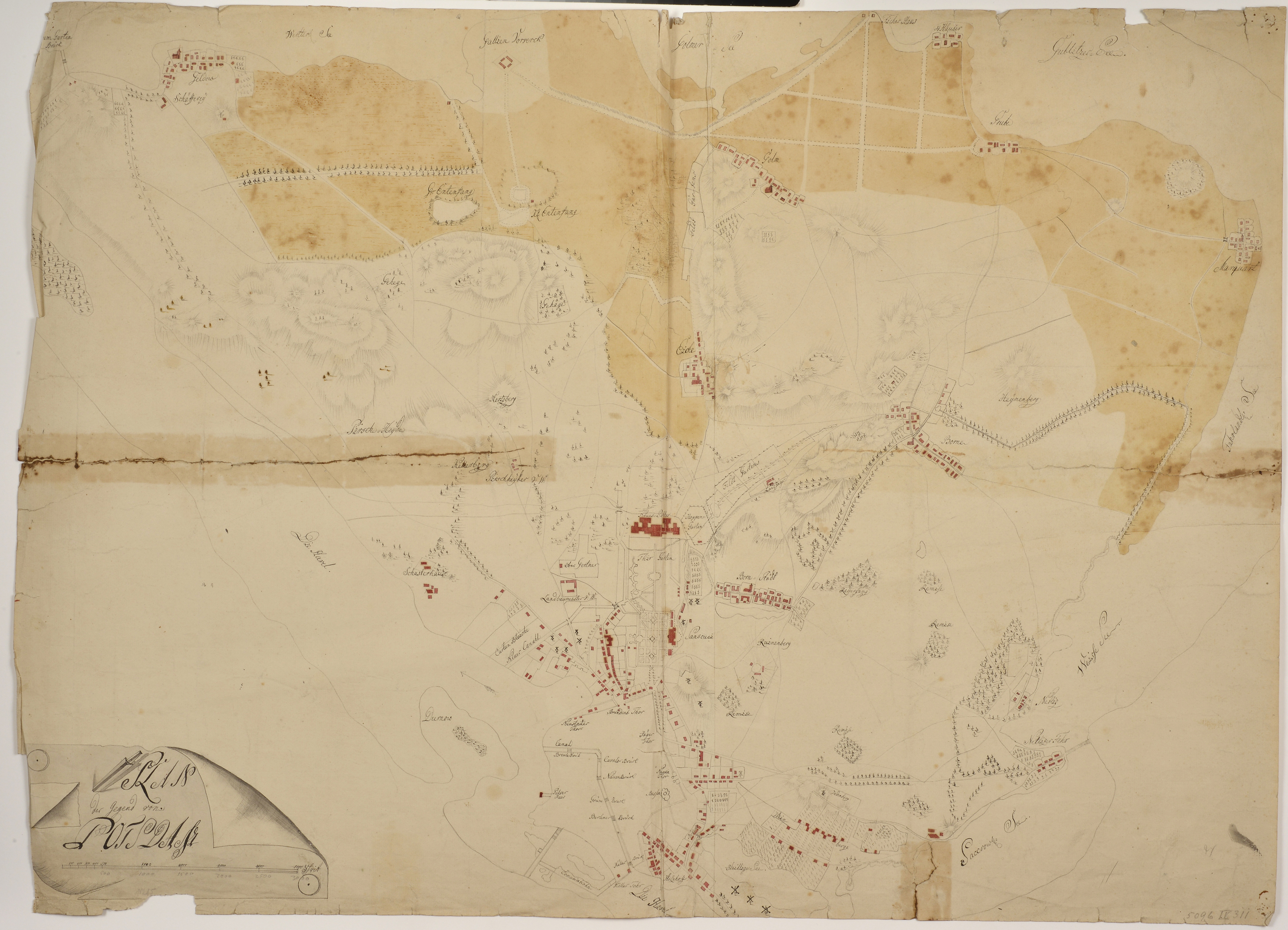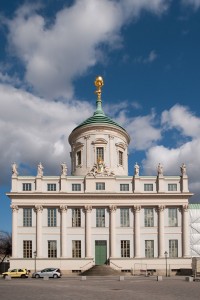Wohl von einem Laien angefertigter, nach Westen ausgerichteter Plan von Potsdam und Umgebung von Golm im Westen über Nedlitz im Norden, den Holzmarkt (Schiffbauergasse) im Osten und den Tornow ("Durnow") im Süden, entstanden um 1800. Im Innenstadtbereich allein Angabe der Stadttore und des Kanals mit den bis dato errichteten Brücken. Der hier noch als "Cavalierbrücke" angegebene Übergang wurde 1802 durch die nach ihrem Baumaterial benannte Eiserne Brücke ersetzt (1887 weiterer Neubau mit Umbenennung in Waisenbrücke).
bez.:
u. li.: Plan / der Gegend von / Potsdam / (Maßstab) 3000 Schritt
en

